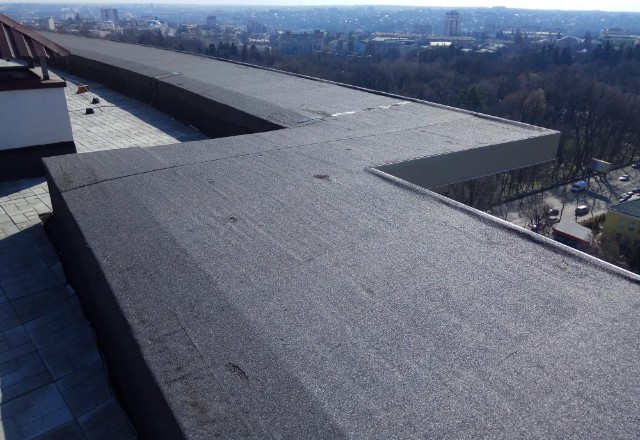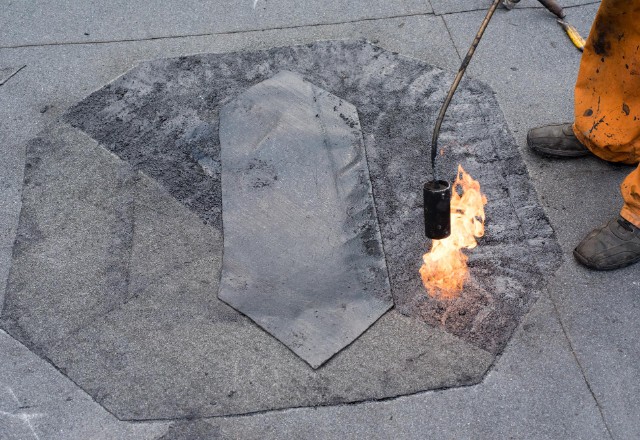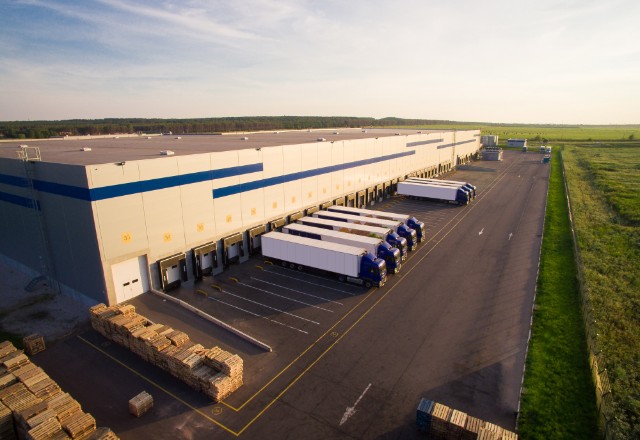Modified bitumen roofing is frequently utilized in commercial structures as a flat roofing option. It consists of traditional asphalt roofing with added plastic or rubber modifiers. As a result, modified bitumen roofing has improved durability, tensile strength, and resistance to harsh weather conditions. Modified bitumen roofing can come in a variety of colors and finishes, making it a popular choice for commercial building owners who want energy-efficient, low-slope roofs that are also aesthetically pleasing. In the following sections, we will discuss more about modified bitumen roof systems, lifespan, and maintenance.
Disclaimer: The information contained in this article is for informational and educational purposes only. It should not be construed as professional advice and should not be used as a substitute for professional consultation. We strongly recommend consulting with a qualified roofing specialist before making any decisions about modified bitumen roofs. Advance Roofing LLC has been proudly serving the Spokane, WA area for many years with the highest standard of quality roofing solutions. For expert advice and reliable installation services, please get in touch with our dedicated team today!
Advantages of Modified Bitumen Roofs
Modified bitumen roofs are a popular choice for commercial buildings due to their superior performance and durability in various weather conditions. This roofing system has numerous advantages that make it a preferred choice among roofing contractors and building owners.
One of the key benefits of modified bitumen roofs is their exceptional waterproofing capabilities. Unlike other roofing systems, modified bitumen material is highly resistant to water and moisture, ensuring that your commercial building stays dry even in inclement weather. This makes it an ideal roofing choice for buildings located in rainy or humid regions.
Additionally, modified bitumen roofs offer superior UV and heat resistance. The material is designed to withstand extreme temperatures without cracking or melting, thereby maintaining its integrity and longevity over time. This makes it an ideal roofing choice for structures that receive a lot of sunlight and heat exposure.
Modified bitumen roofs are also highly weather-resistant, making it a suitable choice for structures located in areas with harsh weather conditions. Its tear-resistant and temperature-stable nature also makes them suitable for a range of flat roofing systems in commercial buildings.
Furthermore, modified bitumen roofs offer various installation methods, including VOC-free and flame-free options, making them an environmentally friendly choice that contributes to a safe and healthy workplace.
When installed with a “cool roof” treatment, modified bitumen roofs can also contribute to energy efficiency in your commercial building. This treatment reflects sunlight and reduces the amount of heat absorbed by the roof, which reduces indoor cooling requirements and lowers energy costs over time.
Finally, modified bitumen roofs have quick and easy repair and maintenance options and a competitive life cycle cost. With proper maintenance, modified bitumen roofs can last up to 20 years, making it a preferred choice for commercial roofing systems.
In conclusion, modified bitumen roofs offer numerous benefits such as waterproofing, UV and heat resistance, weather-resistance, environmentally friendly installation methods, energy efficiency, and easy repair and maintenance options. These advantages make modified bitumen roofs a competitive and cost-effective solution for commercial roofing systems.

Materials Used in Modified Bitumen Roofs
Modified bitumen roofs are a popular choice for commercial buildings due to their exceptional waterproofing capabilities, superior UV and heat resistance, and weather resistant nature. But what exactly is modified bitumen material composed of? In this section, we will explore the various materials used in modified bitumen roofs, their properties, and how they contribute to the overall performance and durability of the roofing system.

Atactic Polypropylene (APP)
Atactic Polypropylene (APP) is a thermoplastic polymer that is extensively used in the roofing industry as a key component of modified bitumen roofing systems. APP is a plastic asphalt that is added to bitumen, or asphalt, to create a roofing membrane that provides numerous advantages.
When APP is added to roofing materials, it enhances the properties of the construction materials, providing them with improved durability, flexibility, and resistance. APP is specifically known for its UV resistance, making it suitable for use in roofing membranes that will be exposed to prolonged sunlight.
APP is one of the primary components of modified bitumen roofing systems due to its composition of polymers, which offer improved strength and flexibility, compared to traditional roofing membranes. This features make APP a popular roofing membrane material for commercial and residential buildings.
The use of APP in modified bitumen roofing systems provides many advantages. It offers superior protection against outdoor elements such as fire, chemicals, and harsh weather conditions, making it a popular choice for roofing contractors and owners of commercial and residential buildings. The use of APP also ensures the longevity of the roofing membrane, providing it with a longer lifespan than other roofing systems that use traditional materials.
In conclusion, Atactic Polypropylene (APP) is an important material used in the construction of modified bitumen roofing systems. The combination of APP with bitumen creates a roofing membrane with enhanced durability, flexibility, UV resistance, and protection, resulting in a more energy-efficient and cost-effective roofing system for commercial and residential buildings. The roofing industry will continue to see the use of APP membranes as a preferred choice for roofing projects.
Synthetic Rubber (SBS)
Modified bitumen roofing systems also frequently utilize a Synthetic Rubber (SBS) material in their construction. SBS is a thermoplastic elastomer that is added to roofing membranes to improve their flexibility and durability, making them better able to withstand the impact of foot traffic as well as the stresses of extreme temperature fluctuations and weather conditions.
SBS is particularly useful in modified bitumen roofing systems because it helps the roofing membrane maintain its shape, preventing it from cracking or blistering over time. This feature enhances the overall lifespan of the roof, making it a popular choice for commercial and residential buildings.
In addition to its ability to improve the roof’s flexibility and durability, SBS also provides resistance to UV light damage, which can be especially useful for buildings located in areas with prolonged exposure to sunlight. Furthermore, the use of SBS in modified bitumen roofs can prevent oxidation, further extending the lifespan of the roofing membrane.
Compared to other materials used in roofing systems, modified bitumen roofs that incorporate SBS offer numerous advantages. For example, they are less likely to crack or blister than roofs made with traditional materials like hot asphalt or cold adhesive, and are more resistant to the effects of UV light, weather, and foot traffic. This can help reduce the need for costly repairs and replacements over time, making SBS-modified bitumen roofs a cost-effective solution for building owners and roofing contractors alike.
Overall, Synthetic Rubber (SBS) is a valuable material in the roofing industry, adding flexibility and durability to modified bitumen roofing systems and providing numerous advantages over other traditional materials commonly used in flat roofing systems.
Thermoplastic Polyolefin (TPO)
Thermoplastic Polyolefin (TPO) roofing systems have become increasingly popular in commercial roofing installations due to their numerous advantages.
These roofing systems are composed of a single-ply membrane that is tear-resistant, making them a reliable choice for buildings in areas that experience extreme weather conditions.
TPO roofing also offers resistance to oil, grease, and chemical spills, providing a long-lasting and durable roofing solution for commercial buildings. Moreover, TPO roofing systems are fully recyclable, adding to the eco-friendliness of the solution.
TPO roofs also have excellent UV resistance, which helps to prevent damage and reduce the need for repairs. This feature, combined with the energy-saving abilities of TPO roofing systems, makes them a cost effective solution for building owners. In fact, TPO roofing systems can significantly reduce energy costs by reflecting sunlight and heat away from the building, leading to a more comfortable indoor environment and lower cooling costs.
The standard thickness of TPO single-ply membranes is between 45 and 80 mils, with thicker ones available for use in areas where punctures are more likely to occur. Additionally, TPO membranes come in various colors, providing building owners with the option to choose a color that complements the building’s appearance.
TPO roofing systems can be installed over existing modified bitumen and metal roofs, making them a viable option for retrofitting existing roofs.
However, proper installation techniques are crucial for ensuring the longevity of the roof. Therefore, it is essential to hire a professional roofing contractor with experience in TPO roofing installations and to ensure that the installation is done according to the manufacturer’s specifications.
How are Modified Bitumen Roofs Mounted?
However, proper installation techniques are crucial for ensuring the longevity and effectiveness of the roof. In this part of the article, we will discuss the essential steps involved in the installation of modified bitumen roofs, including the preparation of the roof deck, application of the base sheet and cap sheet, and important details to consider when working in extreme temperatures or foot traffic areas.
Hot Asphalt Application Method
Hot asphalt is used to install modified bitumen roofs. Contractors melt the asphalt. Special kettles are used for this purpose. Then they bond melted asphalt to the substrate using modified bitumen rolls. Skilled contractors are needed to evenly distribute the asphalt before rolling out the material.
The hot asphalt application method is particularly effective when using SBS-modified bitumen. This material can withstand high temperatures and has excellent bonding properties, allowing it to create a durable and long-lasting roof structure that can withstand foot traffic and extreme weather conditions. However, it is not recommended to use APP-modified material with the hot asphalt application method. APP-modified bitumen can bubble or wrinkle when exposed to high temperatures, leading to a shorter lifespan and potential roof failure.
Contractor error is a real concern with the hot asphalt application method. There is a risk that unskilled or inexperienced contractors might use APP-modified material instead of SBS, leading to potential roof failure, and it may pose a threat to the safety of the building and occupants.
Due to the decline in popularity of built-up roofing in general, most roofing contractors no longer maintain the asphalt kettles and other hot asphalt application equipment needed for this method. This decline means that the hot asphalt application method is increasingly becoming irrelevant in roofing projects, instead being replaced by more modern and energy-efficient roofing systems.
In conclusion, the hot asphalt application method remains an effective way to install modified bitumen roofs, especially when using SBS-modified bitumen. However, as the roofing industry evolves and newer roofing systems gain popularity, this method may continue to decline in use and availability. Thus, it is essential to consult a certified and experienced commercial roofing contractor to determine the best roofing approach for your building.

Cold Adhesive Application Method
Modified bitumen roofing systems can be installed using a variety of methods, with the two most common being hot asphalt and cold adhesive application. Hot asphalt application involves heating the asphalt to high temperatures and then pouring it onto the roof deck to adhere the modified bitumen membrane. This method has been widely used in the past, but it has certain limitations and risks associated with it.
One alternative to the hot asphalt application method is the use of cold-process adhesives. These adhesives are specially formulated to provide a secure bond between the modified bitumen membrane and the roof deck without the use of hot asphalt. Cold adhesives are often used as a substitute for hot asphalt in modified bitumen roof membrane specifications. There are several benefits to using this type of adhesive.
One of the main advantages of cold adhesives is their low VOC levels. They have a much lower impact on the environment compared to hot asphalt, which can release harmful volatile organic compounds (VOCs) into the air. Cold adhesives are also odorless, making them a more comfortable and less intrusive choice for building occupants.
Applying cold adhesive to a roof deck is a straightforward process that involves several steps.
Firstly, the roof deck must be clean and free of debris.
Next, the cold adhesive is applied to the deck using a spray or a trowel. It is important to ensure that the adhesive is spread evenly across the surface of the roof deck.
Once the adhesive has been applied, the modified bitumen membrane can be rolled out over the adhesive.
It is then pressed firmly into place, ensuring that it is securely bonded to the roof deck. Any areas of the membrane that are not fully adhered can be patched using additional cold adhesive.
It is worth noting that some cold adhesives may require a curing period before they can support the weight of foot traffic or other loads. Be sure to follow the manufacturer’s recommendations carefully to ensure that the adhesive is given enough time to cure properly.

Torch-Applied Method
The Torch-Applied method is a popular application technique for Modified Bitumen Roofing. This method involves the use of propane torches to melt and apply asphalt on the underside of the modified bitumen rolls. The melted asphalt binds the roofing material to the substrate, creating a sturdy and long-lasting roof.
While the Torch-Applied method was commonly used in the past, it has become less popular due to safety concerns. The use of open flames on roofs can pose a significant fire hazard, making it crucial to ensure the presence of a fire monitor on the roof at all times.
Despite its safety concerns, the Torch-Applied method remains an effective and efficient application technique. Its primary benefit is its ability to create a strong and lasting bond between the roofing material and substrate. In addition, this method is relatively fast and can cover large areas quickly.
However, due to the potential safety risks involved, many roofing professionals have shifted to alternative installation methods such as cold-process adhesives and peel-and stick membranes. These alternative methods provide a safer and more efficient solution while also ensuring that the roofing material is effectively secured to the substrate.
In summary, the Torch-Applied method of Modified Bitumen Roofing is an effective technique for securing roofing materials to substrates. While it has become less popular due to safety concerns, it remains a viable option for roofing professionals who take the necessary precautions and prioritize safety.

Maintenance and Life Expectancy of Modified Bitumen Roofs
Maintaining modified bitumen roofing systems is important for their longevity and to avoid expensive repairs. We will discuss the importance of regular maintenance for modified bitumen roofs and their expected lifespan under different weather conditions.
Regular Inspections and Maintenance Requirements for Flat Roofs
Flat roofs, particularly those made of modified bitumen materials, require regular inspections and maintenance to ensure their longevity and avoid potential damage. Inspections should be conducted at least twice a year, or after severe weather events, to detect any wear and tear and the need for repairs.
Semi-annual inspections are critical to identify any cracks, blisters, or holes on the roof surface that may lead to leaks and potential water damage. After severe weather events, it is necessary to assess any possible damage caused by wind, hail, or heavy rain. Scheduling an inspection promptly can help address any urgent issues before they worsen.
The maintenance program for flat roofs should include specific tasks such as clearing debris, resealing caulking, and examining flashing. Debris such as leaves, branches, and garbage can accumulate and block gutters and drainage systems, leading to standing water that can seep through the roof membrane. It is crucial to clear any debris regularly to avoid water infiltration.
Resealing caulking around skylights, vents, and HVAC units is another essential maintenance task for flat roofs. Caulking can deteriorate over time, leading to leaks and water damage. Reapplying caulking when necessary will help ensure the roof is watertight and avoid any moisture intrusion.
Examining or replacing damaged flashing is also necessary to prevent water from infiltrating the roof membrane. Flashing is a metal strip used to seal roof transitions, such as those surrounding skylights, chimneys, or vents.
Adequate insulation is another critical component of maintaining a flat roof. Proper insulation reduces heat transfer, preventing energy loss and lowering energy costs. It also helps prevent leaks caused by melting snow or ice dams during winter.
Flat roofs are prone to leaks since they have minimal slope and can accumulate water. It is crucial to follow the manufacturer’s instructions when installing insulation, ensuring adequate insulation and avoiding potential damage from water infiltration.
Regular inspections and maintenance are essential for maintaining the longevity and energy efficiency of flat roofs, particularly those made of modified bitumen materials. By following above mentioned guidelines, building owners can avoid costly roofing repairs and ensure a safe and comfortable environment for their occupants.

Factors Impacting the Longevity of a Modified Bitumen Roofing System
A modified bitumen roofing system is a popular choice for low-slope roofs due to its durability, flexibility, and easy maintenance. However, its lifespan can be affected by various factors, and it is essential to inform clients and contractors about these factors to help them set realistic expectations and maintain the roof properly.
One of the critical factors affecting a modified bitumen roofing system’s life expectancy is the orientation of the roof surface. A south-facing roof surface receives more exposure to the sun’s UV rays, which can accelerate the aging of the roof membrane and shorten its lifespan. Therefore, it is crucial to factor in the roof’s orientation and position while evaluating its expected lifespan.
Another factor that can impact a modified bitumen roofing system’s lifespan is the attic ventilation. Poor attic ventilation can cause heat buildup, which can lead to premature aging of the roof membrane and reduce its lifespan. A properly ventilated attic allows for adequate air circulation, preventing heat buildup and maintaining the roof’s temperature stability.
The quality of the roof material and installation workmanship are other critical factors that can affect a modified bitumen roofing system’s lifespan. Poor quality materials or installation work can lead to defects, premature aging, and reduced tensile strength, which could cause the roof to fail early.
Environmental factors such as harsh climate conditions can also significantly reduce a modified bitumen roofing system’s life expectancy. Extreme temperatures, including cold weather and severe heat, can cause the roof membrane to expand and contract, leading to cracks and leaks. Accumulation of leaf debris on the roof can also lead to ponding, which can accelerate wear and tear and cause the roof to fail early.
It is crucial to explain these factors to clients and contractors to help them set realistic expectations and maintain the roof properly to extend its lifespan. Regular inspections, maintenance, and prompt repair of any defects can help avoid premature failure and extend the roof’s life expectancy.

Installing a Modified Bitumen Roofing System on Commercial Buildings: Key Advantages
Modified bitumen roofing systems use a combination of polymer modified bitumen and reinforcement materials to create a durable, long-lasting roofing solution. Here are some of the benefits of installing a modified bitumen roofing system on commercial buildings:
- Waterproof and Leak-Resistant
Modified bitumen roofing systems are designed to offer superior waterproofing and leak resistance, ensuring that the roof will provide reliable protection against the elements for years to come. The materials used in these roofing systems create a waterproof barrier that can withstand heavy rain and other challenges that can compromise the roof’s integrity.
- UV and Heat Resistant
UV and heat resistance are two of the most important properties that any roof system must possess. Modified bitumen roofing systems are highly effective at blocking the sun’s harmful rays and reflecting heat, making them a smart choice for buildings in high heat environments. The UV and heat-resistant properties of these roofing systems help reduce energy costs, making them an excellent investment.
- High Tensile Strength and Tear Resistance
Modified bitumen roofing systems are highly durable, thanks to their high tensile strength and tear resistance. This feature means that the roofing system is less likely to suffer from damage due to hail, wind, or other environmental factors. If it does suffer damage, the high tensile strength and tear resistance mean that repairs will be quick and straightforward.
- Compatibility with Fire, Hail, and Wind-Rated Roofing Systems
Modified bitumen roofing systems are highly compatible with other roofing systems, including those that are rated for fire, hail, and wind. This compatibility means that modifying or upgrading the roof down the line will be easier, as you won’t have to worry about compatibility issues.
- Environmentally Friendly
Modified bitumen roofing systems offer environmentally friendly installation options due to their low environmental impact. The materials used in these roofing systems are recyclable, which means that they can be reused or repurposed at the end of their life cycle. This feature is especially valuable for commercial buildings that need to meet green building standards.
- Competitive Life Cycle Cost
Modified bitumen roofing systems have a favorable life cycle cost compared to other roofing options. The initial investment cost is relatively low, and the maintenance expenses are also modest. This low life cycle cost, along with the long life expectancy of these roofing systems, makes them a smart investment for commercial building owners.
These features make modified bitumen roofs an excellent choice for building owners looking for a cost-effective and reliable roofing solution.

Conclusion
Modified bitumen roofs offer several benefits, including waterproofing, UV and heat resistance, high tensile strength and tear resistance, compatibility with other roofing systems, and environmentally friendly installation options, all at a competitive life cycle cost. However, there are also some drawbacks to consider, including a shorter lifespan than other roofing types and the need for proper maintenance to ensure maximum performance.
For commercial building owners, regular inspections and maintenance are crucial in safeguarding their investment in a modified bitumen roofing system. Inspections can detect any potential issues early on, allowing for timely repairs and preventing more significant problems from developing. Maintenance, including cleaning the roof and keeping it free of debris, can improve performance and extend the roof’s lifespan.
By understanding the benefits and drawbacks of modified bitumen roofs and scheduling regular inspections and maintenance, commercial building owners can ensure their roofing system provides reliable protection against the elements for years to come.



 509-201-4190
509-201-4190
